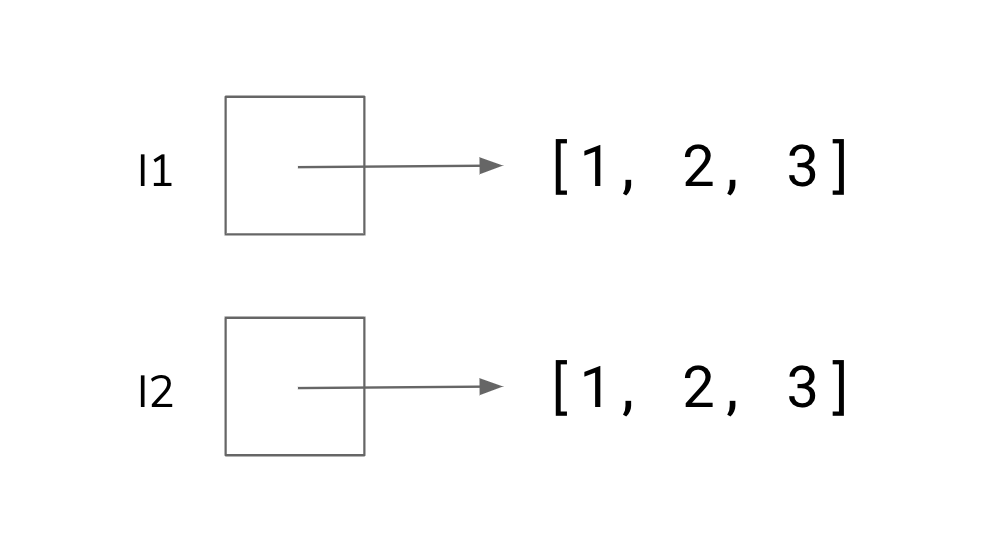Equality and Identity
Equality and Identity#
Consider the code block below and the question: Are l1 and l2 equal?
l1 = [1, 2, 3]
l2 = [1, 2, 3]
This sounds like a simple question, but the answer can be complex since it depends on what we mean by “equal”. Equality usually means one of two things:
The objects have states that are equivalent. We call this value equality.
The objects are actually the same object. We call this identity equality.
To understand these two notions of equality, remember to think back to the memory model we could construct for this code. Recall that l1 and l2 refer to different list instances because [1, 2, 3] evaluates to a brand new list .

The first notion of equality, value equality, is asking if both list s store the same values. In this case, we would consider them equal because they both store the same values in the same order: 1, 2, and 3.
The second notion of equality, identity equality, is asking if both variables refer to the same list. In this case, there are two list objects (that just happen to have the same values inside), but they can’t have the same identity because they are different objects!
For a more familiar analogy, think about two identical twins. We might consider them to be value-equivalent, assuming (unrealistically) they are the same in all ways that matter to being “human”. However, we would not consider them identity-equivalent since they are fundamentally two different people.
To capture these two notions of equality, Python has two ways to check “equals” depending on what definition you want to use.
x == ycomparesxandyare value-equivalent.x is ycomparesxandy‘s identity to see if they are the same object (i.e. identity-equivalent).
With that knowledge, you should try to predict what the following code block will output before running the code!
l1 = [1, 2, 3]
l2 = [1, 2, 3]
l3 = l1
print('Compare ==')
print('l1 == l2', l1 == l2)
print('l1 == l3', l1 == l3)
print('l2 == l3', l2 == l3)
print()
print('Compare is')
print('l1 is l2', l1 is l2)
print('l1 is l3', l1 is l3)
print('l2 is l3', l2 is l3)
